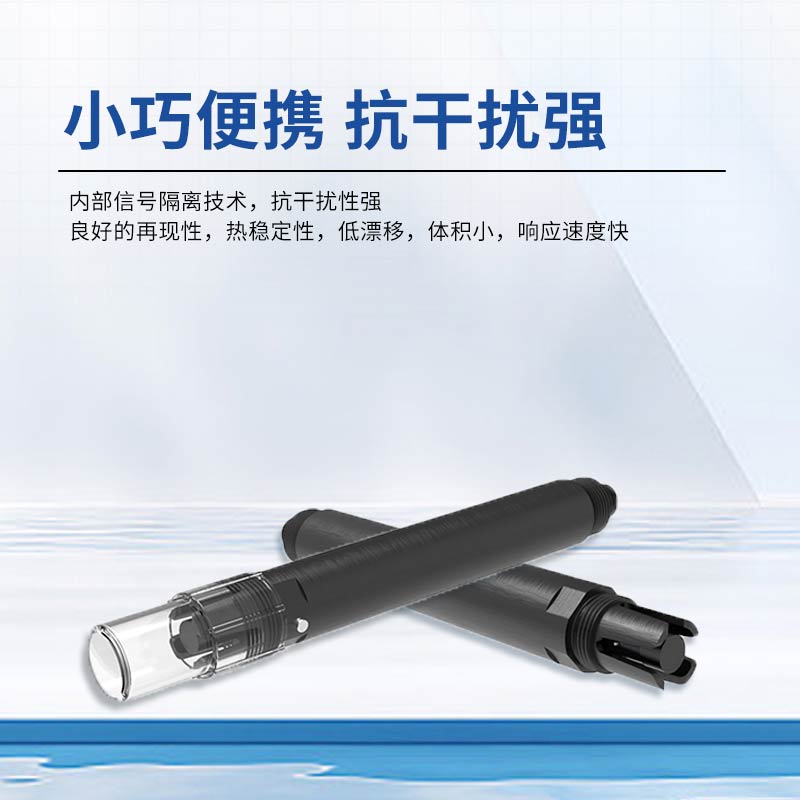Shandong Fengtu IOT Technology Co., Ltd
Sales Manager:Ms. Emily Wang
Cel,Whatsapp,Wechat:+86 15898932201
Email:info@fengtutec.com
Add:No. 155 Optoelectronic Industry Accelerator, Gaoxin District, Weifang, Shandong, China

Sales Manager:Ms. Emily Wang
Cel,Whatsapp,Wechat:+86 15898932201
Email:info@fengtutec.com
Add:No. 155 Optoelectronic Industry Accelerator, Gaoxin District, Weifang, Shandong, China
time:2025-03-25 09:59:23 source:Weather Station viewed:106 time
When it comes to the advantages of water quality sensors, they can be summarized in six words: real - time, continuous, and automatic.
Since the sensors can be directly deployed in water bodies (such as rivers, sewage treatment plants, water supply pipe networks, etc.), they collect water quality parameters (such as pH value, dissolved oxygen, turbidity, etc.) in real - time through electrochemical, optical, or biochemical reaction principles. These parameters are converted into electrical signals, processed by the built - in processor, and then the data is immediately transmitted to the monitoring platform or the cloud without human intervention.
Wireless transmission technologies (such as the Internet of Things and mobile networks) enable remote monitoring. Users can view water quality dynamics at any time through mobile phones or computers.
Traditional laboratory testing requires manual sampling and then sending the samples for inspection, which has a time lag (for example, the BOD index may change during transportation). In contrast, online sensors can automatically sample at a set frequency (such as once a minute), accelerating the update speed.
Through cloud computing and big data analysis, the system can automatically identify abnormal data and trigger warnings. For example, a sudden drop in dissolved oxygen concentration may indicate the risk of water eutrophication.
With water quality sensors, we can basically achieve unattended, all - weather, and high - precision water quality monitoring, greatly improving the monitoring efficiency.
There is a wide variety of water quality sensors, which can cover the real - time monitoring needs of many key parameters in water bodies. Specifically, there are ammonia nitrogen sensors, oil - in - water sensors, dissolved oxygen sensors, COD sensors, cyanobacteria sensors, sludge concentration sensors, chlorophyll sensors, transparency sensors, chloride ion sensors, residual chlorine sensors, suspended solids sensors, turbidity sensors, conductivity sensors, ORP sensors, pH sensors, water temperature sensors, hardness sensors, and so on.
Fengtu Technology focuses on the research and development, production, and sales of instruments for meteorological environment monitoring and water quality monitoring. Currently, it has launched a variety of sensors and monitoring systems, such as pole - mounted online water quality monitoring stations, turbidity, pH, conductivity, and temperature four - parameter online monitors, etc. The products support the RS485/MODBUS - RTU protocol and can be integrated into the Internet of Things platform for remote monitoring. They are widely used in industries such as environmental protection monitoring, sewage treatment, and aquaculture, providing reliable solutions for water quality monitoring.

Greenhouses play a vital role in agricultural production, providing indispensable support for the cultivation of high-value vegetables, anti-seasonal crops and rare fruits, making their position in the modern agricultural field more and more prominent.Greenhouse greenhouse has many advantages, it is...
Piezoelectric Six Elements Sensor FT-Y6 is a high-performance meteorological monitoring device capable of simultaneously measuring six meteorological elements such as temperature, humidity, wind speed, wind direction, atmospheric pressure and rainfall. It adopts advanced piezoelectric sensor technol...
To formulate an irrigation plan based on soil moisture monitoring data, multiple factors need to be taken into comprehensive consideration, including soil type, crop water requirements, historical and real-time evaporation data, crop growth stages, and real-time weather changes. Firstly, understandi...
digital anemometer for only farming is a digital anemometer that measures wind speed and direction for use in weather stations, airports, agriculture, and more....